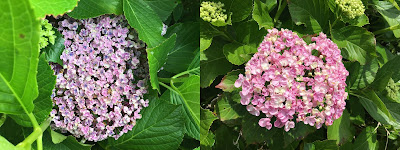Over the years on this blog I have discussed wine closures quite often ie. cork v screw caps.
Because of the high incidence wine spoilage problems associated with cork ie. ‘corking’ caused by TCA ( 2,4,6-trichloroanisole) contamination, the balance has always leant heavily towards screw caps.
Australia was one of the first countries to embrace this technology, first mainly with white wine, then with reds even including expensive top of the range.
It is estimated that around 90% of Australian wine utilizes screw caps.
Other wine producing regions in Europe and the USA were slow on the uptake, even dismissive.
But that has changed considerably over the years. Some imported wine eg. Italian, still use them. Very little French wine in the price bracket I buy in has cork.
Obviously this trend has hit the cork producing countries eg. Portugal, very hard.
And they are fighting back.
I became aware of this when the daughter living in the USA sent me a picture of a bottle of South African wine they were drinking which had a cork twist top closure.
I had never seen one before and did some research.
Obviously I am little behind the times.
The “Helix” cork was developed by the Portuguese cork giant Amorim and is “screw cork” or resealable cork. In practice, these corks are similar to the corks you might find in the top of a whisky bottle as they can be taken out and put back in repeatedly without much effort. But what makes the “Helix” unique is that the cork requires a special bottle with a threaded neck. Matching ridges in the cork allow it to be twisted back into the bottle for an airtight seal after opening. But the “Helix” innovation isn’t new. In fact, Sonoma’s Red Truck Wines became the first U.S. winery to start using the twistable cork way back in 2016. So its rarity in the market place may reflect the uptake of the technology.

Who would be clamouring for a screwcap-cork hybrid?
Probably the biggest argument in support of cork is that it’s supposedly better for aging wine.
However the AWRI (Australian Wine Research Institute) has not examined this specific issue over the longer term but anecdotal observations indicate that red wines develop in much the same manner when sealed with screw caps as they do when sealed with well-performing corks. There are numerous red wines from Australia and New Zealand from early 2000s vintages onwards sealed with screw caps, which invariably demonstrate that this is the case.
There is also the ritual of uncorking the bottle, and the “pop” heard as the cork is released. This was, in the past, considered parts of the wine experience.
The “Helix”does this too.
But is this still part of the wine experience?
I don’t think it is any more, in this part of world anyway.
But more importantly Amorim has achieved a major technological breakthrough to become the world’s first cork producer to deliver natural cork stoppers to winemakers with a non-detectable TCA guarantee*
Known as NDtech, the technology greatly enhances Amorim’s quality control measures by screening individual cork stoppers on the production line to eliminate the risk of corks contaminated with 2,4,6-trichloroanisole reaching winemakers.
Two of the world’s leading wine industry research facilities, Hochschule Geisenheim University and The Australian Wine Research Institute (AWRI) have been engaged to independently validate the performance of NDtech.
Australian wineries are among the first to be offered corks that have undergone NDtech screening.
Will this all mean a huge resurgence of the cork closure?
I doubt it.
* A non-detectable TCA guarantee means that if any TCA remains in a cork it is below the detection threshold of 0.5 nanograms/litre.














